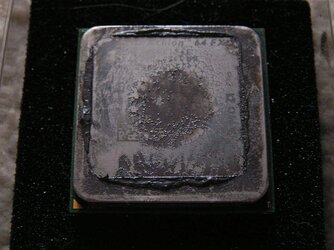Joe Camel,
I gave up hand lapping. My fingers are just too soft to press down uniformly and consistently. The more I tire, the sloppier my work gets. Last 3 HS I lapped, I used a lap wheel and a small weight bearing down on the HS. It's much slower than hand lapping, but I walk away and drink coffee while it slowly laps away a few 10th's of a thousandth. (~.0001-.0005). When finished, the HS is nothing if not flat. Since my tests showed it didn't help by any appericiable amount, I quit lapping. Well, I DO check for dings and burrs, and pass the HS on some 2000 3M wet-or-dry paper. I do just 5 or 6 quick wipes so I don't wear the corners down. I rely on AS5 to fill in the remaining gaps.
I gave up hand lapping. My fingers are just too soft to press down uniformly and consistently. The more I tire, the sloppier my work gets. Last 3 HS I lapped, I used a lap wheel and a small weight bearing down on the HS. It's much slower than hand lapping, but I walk away and drink coffee while it slowly laps away a few 10th's of a thousandth. (~.0001-.0005). When finished, the HS is nothing if not flat. Since my tests showed it didn't help by any appericiable amount, I quit lapping. Well, I DO check for dings and burrs, and pass the HS on some 2000 3M wet-or-dry paper. I do just 5 or 6 quick wipes so I don't wear the corners down. I rely on AS5 to fill in the remaining gaps.








 i just know how to push some metal on some sandpaper...
i just know how to push some metal on some sandpaper... to the forum!!
to the forum!!

